

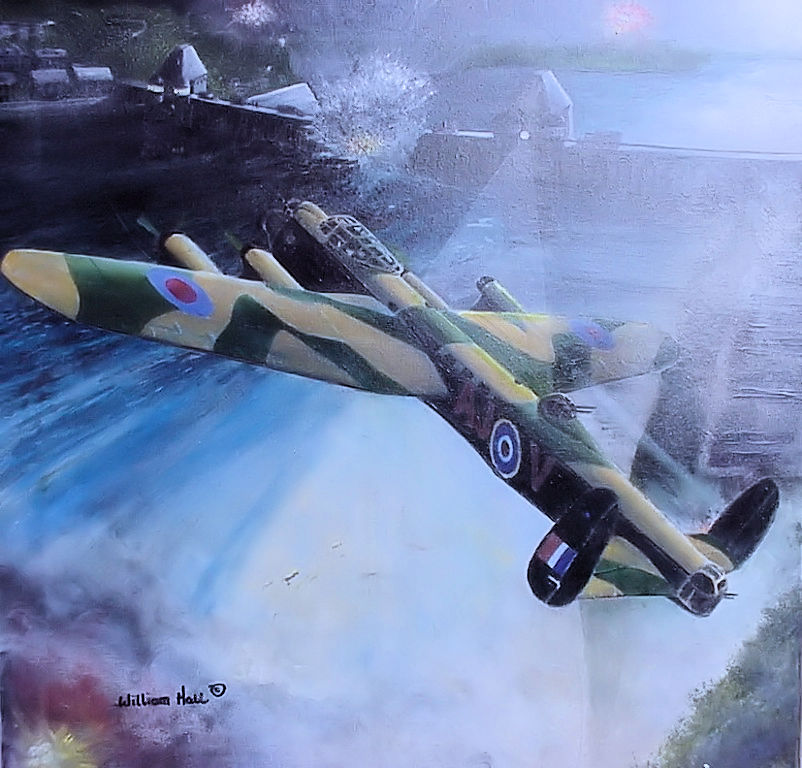
SOLD
24" x 36" x 1", Oil on Canvas, Unframed.
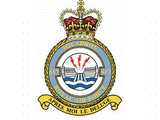
| Engine: Wingspan: Length: Height: Wing Area: Maximum Speed: Cruising Speed: Service Ceiling: Maximum Weight: Empty Weight: Fuel Capacity: Range: Armament: |
4 Rolls Royce Packard Merlin 224
V-12's 102 feet 69 feet 6 inches 20 feet 4 inches 1300 square feet 275 miles per hour 185 to 225 miles per hour 20 000 feet ( maximum weight) 61 500 pounds 36 500 pounds 2154 Imperial gallons 2530 miles with 7000 pound bomb load 1730 miles with 12 000 pound bomb load 1550 miles with 22 000 pound bomb load nose turret -two .303 cal. mid-upper turret -two .303 cal. tail turret -four .303 cal. |
Dam Busters: A brief history of the Mohne Dam
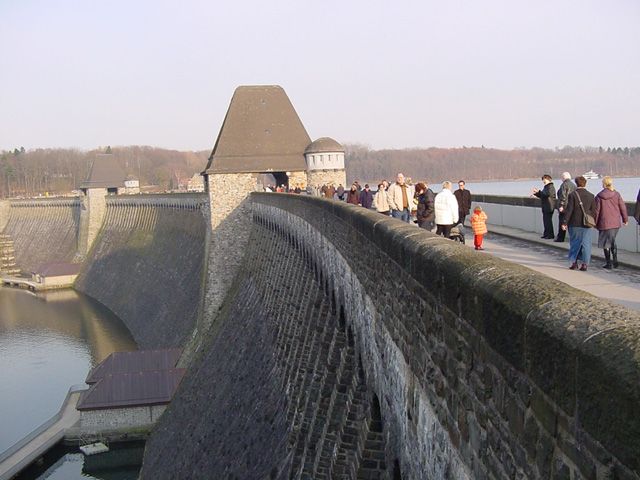
Construction of the Mohne dam started in 1909 and
was completed in 1913 after four years. Located just south of Soest and 25 miles
east of Dortmund, the Mohne dam was the largest in Europe.
At almost 120 feet (36.6 meters) high from the bedrock to the crest, 850 yards
(777 meters) long and more than 100 feet (30.5 meters) thick at the base (25
feet or 7.6 meters at the top), it was built from blocks of granite masonry. It
held back approximately 140 million tons of water.
The Mohne dam was protected by 2 anti-torpedo nets in the water in front of the
dam and anti aircraft guns.
Dam Busters: A brief history of 617 Sqn RAF
To win the war, the British aimed first to destroy the Ruhr Valley, Germany's industrial heartland. From March to June, 1943, British and Canadian air crew, including Harvey, Brown and Moffat, flew repeatedly over the Ruhr River Valley, heavily bombing its major cities-Dortmund, Duisburg, Gelsenkirchen. But the Germans seemed to rebuild their cities as soon as they were destroyed. Something else was needed.
In the green, rolling countryside, across rivers emptying into the Ruhr, a tributary of the Rhine, the Germans had built a series of dams. The dams irrigated the crops that fed the highly concentrated working&endash;class population. More significant for the British military, the dams controlled the water level for an intricate network of canals crucial to barge transport, and powered the great steel plants and munitions factories of the German war machine.
Across the Channel in England, in a tranquil setting of hollyhocks, lavender and lobelia, Barnes Wallis, an eccentric British scientist, skipped stones in his garden pond. He would live to regret it, but for the moment he was using his spare time to perfect an irresistible bouncing bomb. The very something that was needed.
Ken Brown knew nothing of this. His night raid over Berlin at the end of February, 1943, was his 23rd mission: he had flown 15 operations in Coastal Command and another 9 with 44 Squadron. On March 1st, his entire crew was summarily transferred to Squadron 617.
"There was a hastiness about it," recalls Brown, "trying to get us loaded on the train and rolling. We heard all kinds of rumors. Nobody was telling you anything."
Except that the commanding officer had told Brown that he'd be "the backbone of the squadron. They need your experience." At the train station in Scampton, the 21-year-old pilot did a double-take. His new colleagues sported an impressive display of citations-Distinguished Flying Crosses, Distinguished Flying Medals, even a few Distinguished Service Orders. This was no ordinary squadron.
And the training itself was bizarre. Normally, pilots were reprimanded for flying too low; the Lancaster's were designed to bomb from 20,000 feet and up. Five hundred feet was considered low-level flying.
Squadron 617 started at 250 feet and...
"When we got used to it, we went down to 150 feet. This was really low. But then they asked us to start flying at 60 feet, at night-this was a whole new experience. It was frightening. You had trees; you had high tension wires; many different obstacles. At that altitude, you can't be sloppy. If you dropped a wing at 60 feet, it'd scrape on the ground."
The airmen still knew nothing about Squadron 617 except that it seemed to include every hot & endash; shot crew in England. It didn't even have the planes it would use for the actual operation. They borrowed a few and practiced low-level flying with dummy bombs approximating the load they would carry. A few days before the raids, they got their planes and for the first time saw Barnes Wallis' top-secret bomb.
After two and a half months of training, Brown and the other air crew finally found out what they were supposed to destroy with the new bomb.
"Most of us thought it would be ships. Believe me, we wet all really shocked when our commander told us we were gain to do the dams, 'the great dams of Germany,' he said."
Now the men knew what their targets would be the Lister, the Mohne, the Eder and the Sorpe, the largest dam on the Ruhr and the hardest to hit. They were told the size of the dams, the water they contained, the way the bomb would ski across the water, sink down beside the dam and explode to crack it open, the acres of German land their mission would flood. It took five tons of water for each ton of steel produced they were told. If they were successful, the forces of nature would wreak more havoc than a thousand bombs, at less cost to the air force. It would have a tremendous impact on the war effort.
"We were impressed-and frightened about the whole thing," says Brown. "We thought, 'Holy Moses, surely those dams are defended.' They showed us the booms strung across the face of the dam to defend it. You couldn't hit the boom-the bouncing bomb had to go over the boom and into the dam.
"The bomb had to be dropped exactly 60 feet at an exact air speed. As it struck the water, it spun backwards, pushing water up in front of it like a geyser. The first crew to try it had their tail snapped off by the column of spray and barely limped back to land.
"If you got over there without running into high tension wires, or someone filling your ass with lead, you were gonna be lucky. If you dropped the bomb, which most hadn't done yet, and got away with it, you were gonna be double lucky. And if you made it back, by God, you were gonna be lucky.
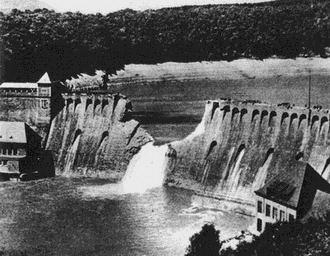
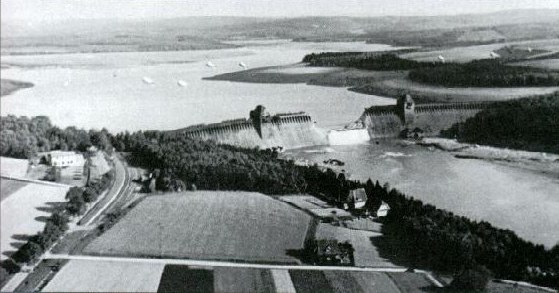
 Canadian
Aviation Artists Association
Canadian
Aviation Artists Association